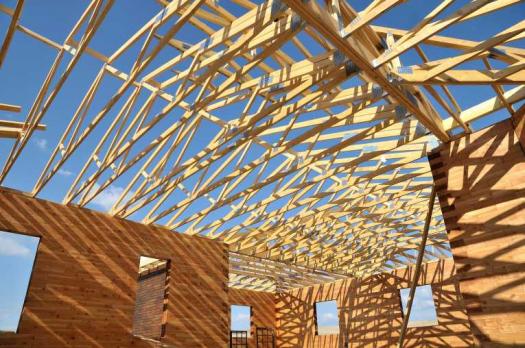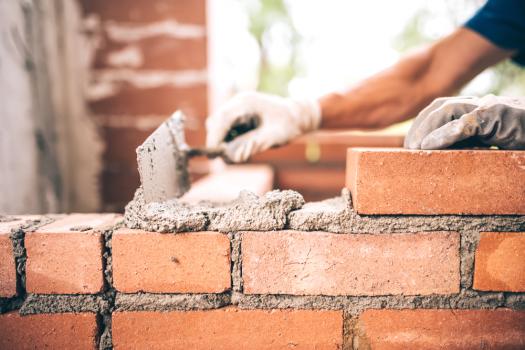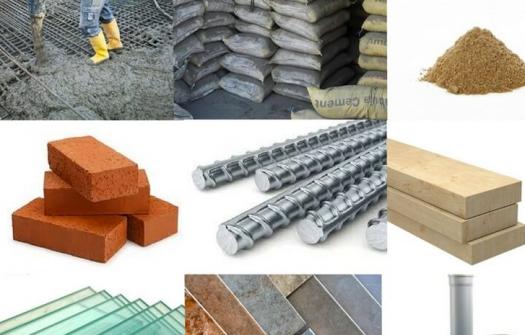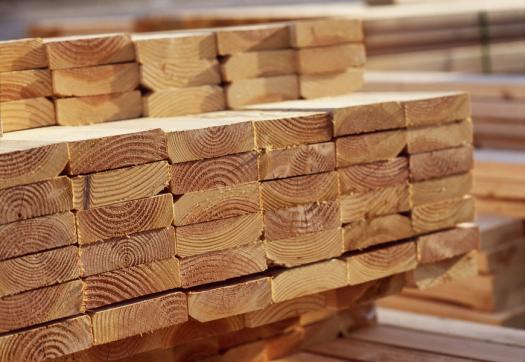How Knowledgeable Are You About Building Materials?

The materials used in construction are so many that very have an in-depth knowledge about them. Their characteristics and uses differ. However, some people believe they know a lot about the materials used in building construction. Find out if you are one of them with this short test.
- 1.
What is the nicknake of reinforcing bar?
- A.
Rebar
- B.
Steel bar
- C.
Rile bar
- D.
Mesh bar
Correct Answer
A. RebarExplanation
The correct answer is "Relbar" because it is a commonly used nickname for reinforcing bars in the construction industry. This term is often used by professionals and workers to refer to steel bars that are used to strengthen concrete structures.Rate this question:
-
- 2.
What can you say of sand, clay, leaves and wood?
- A.
They can be manipulated into variou.
- B.
They are all cheap.
- C.
Not all can be used in construction.
- D.
They are natural occurring.
Correct Answer
D. They are natural occurring.Explanation
The most accurate statement among the options provided is: They are all naturally occurring.Sand is a granular material composed of finely divided rock and mineral particles, typically found in beaches, deserts, and riverbeds.Clay is a fine-grained, cohesive soil material formed by the chemical weathering of rocks and is commonly found in sedimentary deposits.Leaves are the main photosynthetic organs of plants, occurring naturally on various tree and plant species.Wood is a fibrous and porous tissue that primarily comes from the stems and roots of trees, providing structural support in their natural form.While these materials can be manipulated in various ways and have been used in construction throughout history, not all of them are necessarily cheap or directly applicable in modern construction methods without further processing or treatment. Their cost and suitability for construction may vary depending on the context, availability, and intended use.Rate this question:
-
- 3.
What among the options can be used for making walls?
- A.
Wattle and daub
- B.
Treated water
- C.
Bricks
- D.
A and C
Correct Answer
D. A and CExplanation
Both wattle and daub, as well as bricks, are materials that can be used for constructing walls.Wattle and daub is an ancient construction method that involves using a woven lattice of wooden strips (wattle) covered with a mixture of clay, mud, sand, and straw (daub). This technique has been used for centuries in various parts of the world and provides a natural and sustainable option for building walls.Bricks are rectangular blocks made from clay, concrete, or other materials. They are commonly used for constructing walls in residential, commercial, and industrial buildings due to their durability and load-bearing capacity. Bricks can be stacked and bonded together using mortar, a mixture of cement, sand, and water, to create a strong and stable wall.Rate this question:
-
- 4.
What is porous and fibrous and can be used as a building materials and as a tool?
- A.
Stones
- B.
Wood
- C.
Metal
- D.
Mud
Correct Answer
B. WoodExplanation
Wood is a suitable answer because it is both porous and fibrous, making it an ideal material for construction purposes. It can be used as a building material due to its strength and durability. Additionally, wood can also be shaped and carved into various tools, making it a versatile material for both construction and tool-making purposes.Rate this question:
-
- 5.
What cannot be used to build walls?
- A.
Ice and snow
- B.
Plastic
- C.
Wood
- D.
None of the above
Correct Answer
D. None of the aboveExplanation
None of the above options can be used to build walls. Ice and snow are not suitable materials for building walls as they melt and are not structurally stable. Plastic is also not a suitable material for building walls as it is not strong enough to support the structure. Wood, on the other hand, is commonly used to build walls and is a suitable material for construction. Therefore, the correct answer is None of the above.Rate this question:
-
- 6.
What is the other name for asphalt?
- A.
Wood pulp
- B.
Bitumen
- C.
Coal residue
- D.
Quarried tar
Correct Answer
B. BitumenExplanation
Bitumen is the correct answer because it is the other name for asphalt. Bitumen is a sticky, black, and highly viscous liquid or semi-solid form of petroleum. It is commonly used in road construction and surfacing, which is why asphalt is often referred to as bitumen. Wood pulp, coal residue, and quarried tar are not alternative names for asphalt.Rate this question:
-
- 7.
What are quarried stones used for paving roads?
- A.
Sett
- B.
Mezzanines
- C.
Concrete
- D.
Mud
Correct Answer
A. SettExplanation
Sett stones are commonly used for paving roads. They are durable and can withstand heavy traffic, making them ideal for road construction. Sett stones are usually made from natural materials like granite or sandstone, which are quarried from the earth. They are cut into uniform shapes and sizes, then laid in a tightly packed pattern to create a stable and long-lasting road surface. Sett paving is known for its aesthetic appeal and can also be found in other applications such as driveways, walkways, and patios.Rate this question:
-
- 8.
What are mezzanines?
- A.
A malleable materials for reinforcement
- B.
An intermediate floor in a building opened to the floor below
- C.
A flat porous material for making walls
- D.
None of the above
Correct Answer
B. An intermediate floor in a building opened to the floor belowExplanation
Mezzanines are intermediate floors in a building that are open to the floor below. They are typically constructed to provide additional space or functionality within a building, without the need for extensive renovations or expansions. Mezzanines are commonly used in warehouses, factories, and commercial buildings to create additional storage areas, offices, or viewing platforms. They are designed to be easily accessible and can be customized to suit specific requirements. Mezzanines are not malleable materials for reinforcement or flat porous materials for making walls.Rate this question:
-
- 9.
What is not included in the rock content of a granite?
- A.
Plagioclase
- B.
Quartz
- C.
Ore
- D.
Alkali Feldspar
Correct Answer
C. OreExplanation
The rock content of a granite does not include "Ore". Granite is a type of igneous rock that is composed mainly of plagioclase, quartz, and alkali feldspar. Ore refers to a type of mineral or rock that contains a valuable metal or mineral. Since granite is not typically associated with valuable metals or minerals, "Ore" is not included in its rock content.Rate this question:
-
- 10.
When and where will you use the term 'rail and stile'?
- A.
Floor finishing
- B.
Painting
- C.
Woodworking
- D.
Concrete work
Correct Answer
C. WoodworkingExplanation
The term "rail and stile" is used in woodworking. It refers to a technique used in constructing doors, cabinets, and other woodworking projects. It involves joining two pieces of wood together, with the rail being the horizontal piece and the stile being the vertical piece. This technique is commonly used to create strong and durable joints in woodworking projects.Rate this question:
-
Quiz Review Timeline +
Our quizzes are rigorously reviewed, monitored and continuously updated by our expert board to maintain accuracy, relevance, and timeliness.
-
Current Version
-
Mar 22, 2023Quiz Edited by
ProProfs Editorial Team -
Nov 09, 2018Quiz Created by
AdewumiKoju
 Back to top
Back to top












